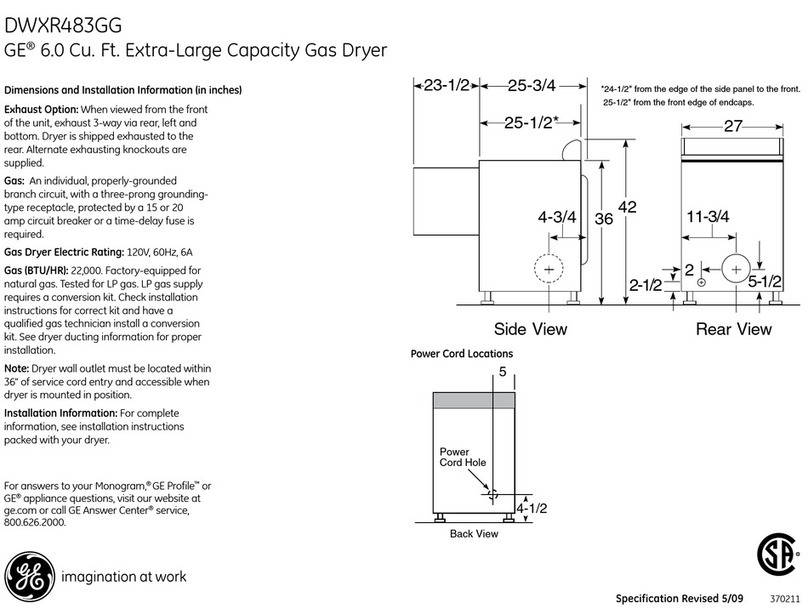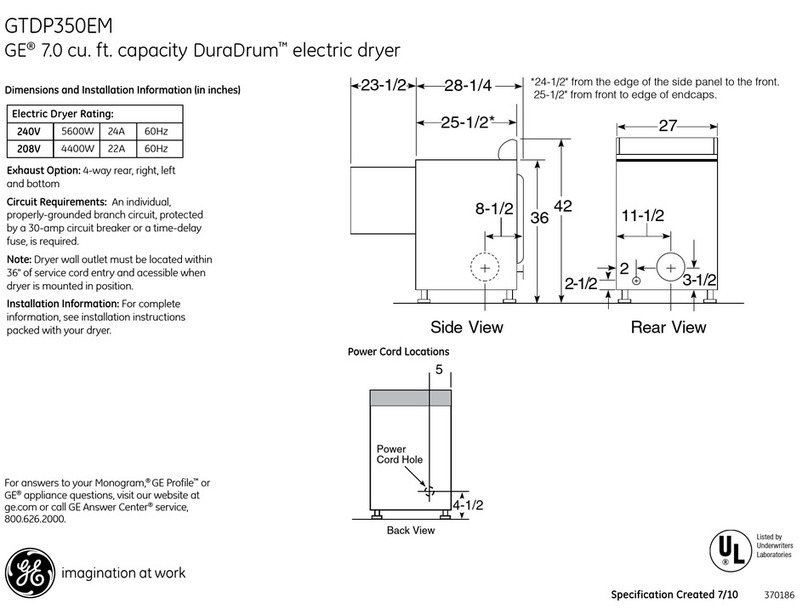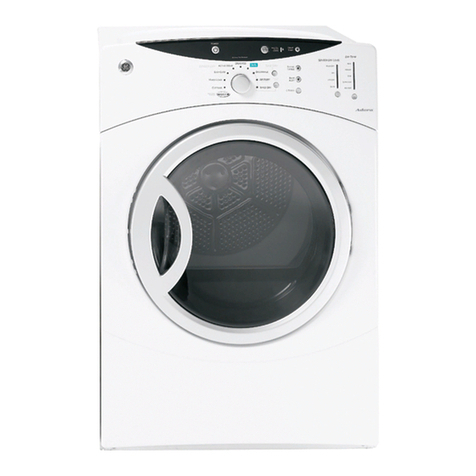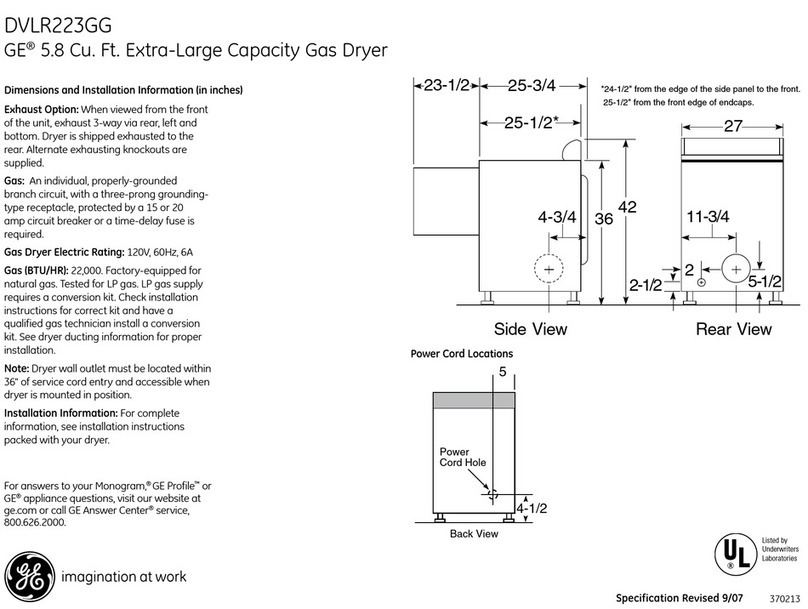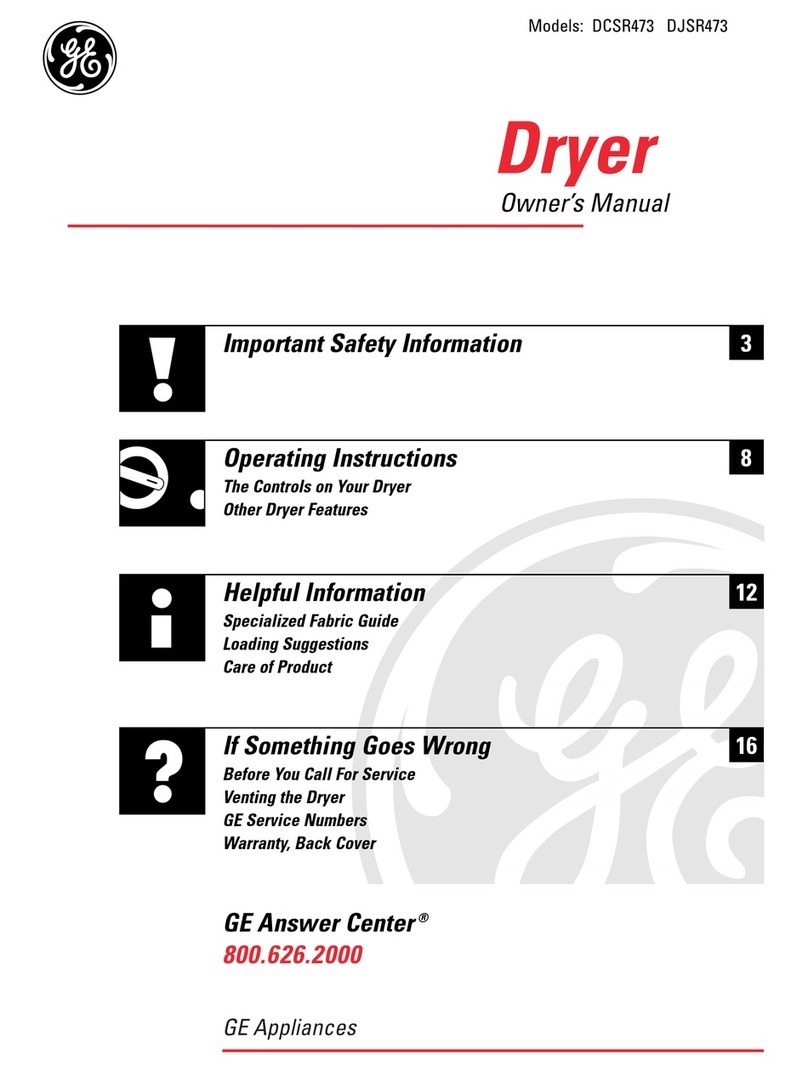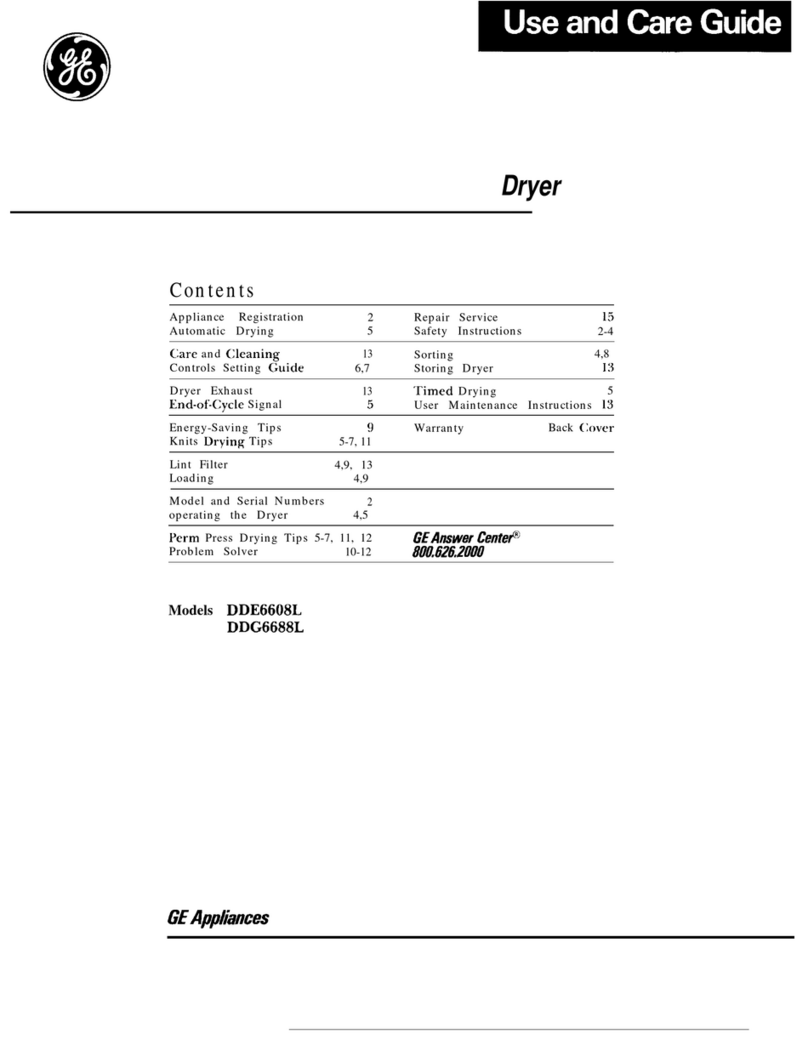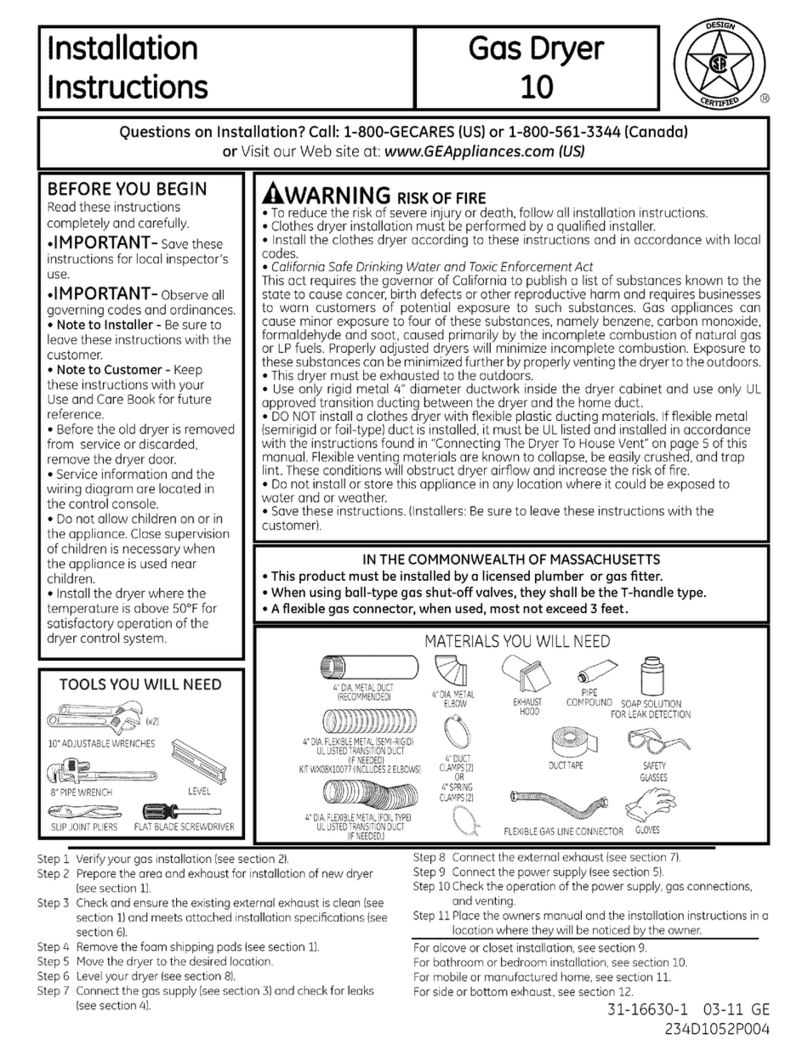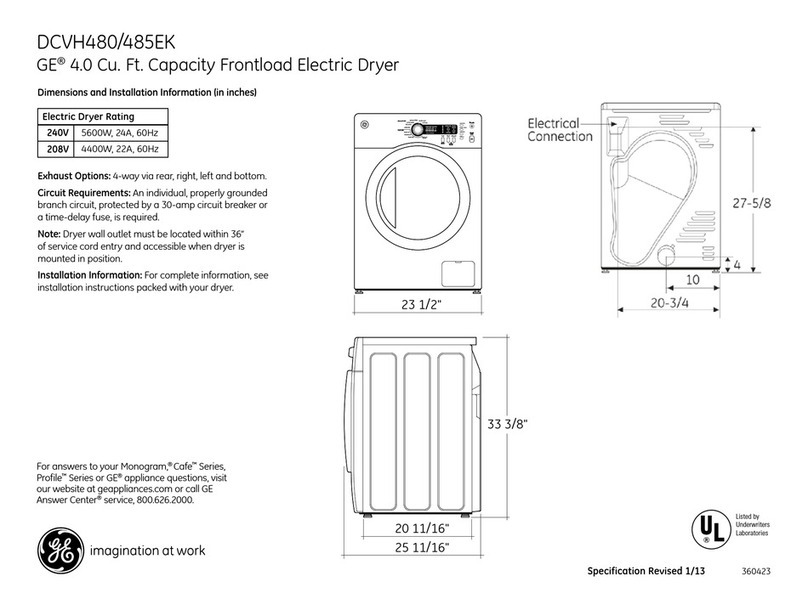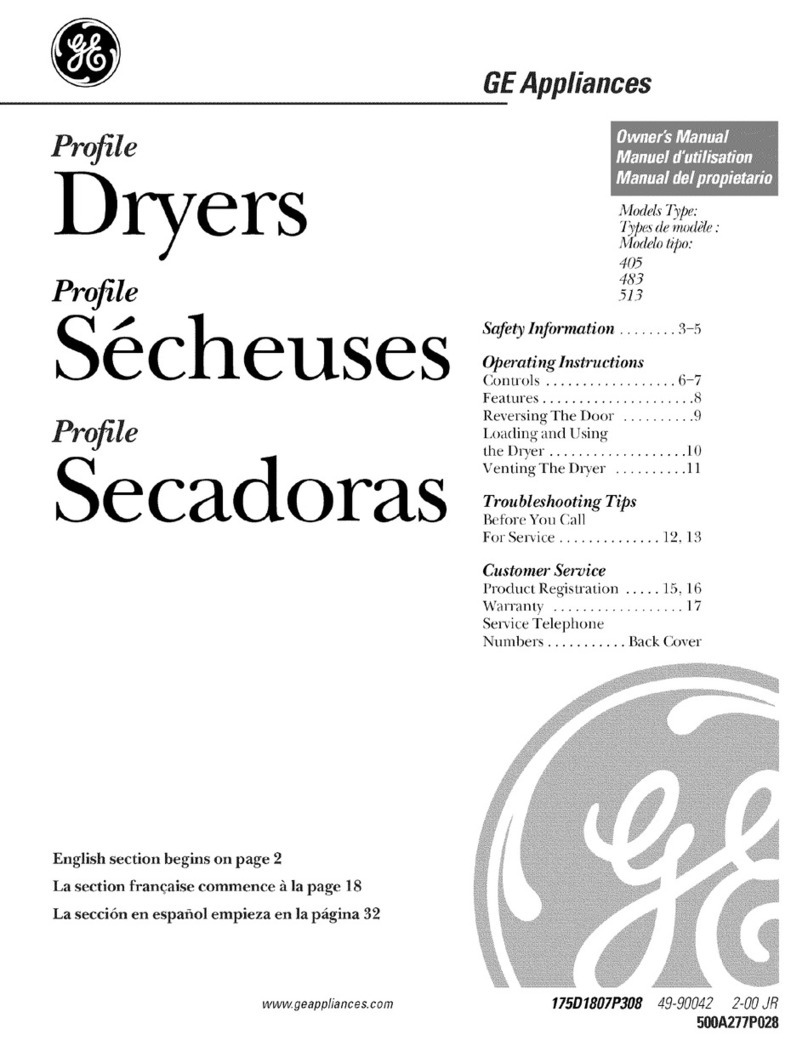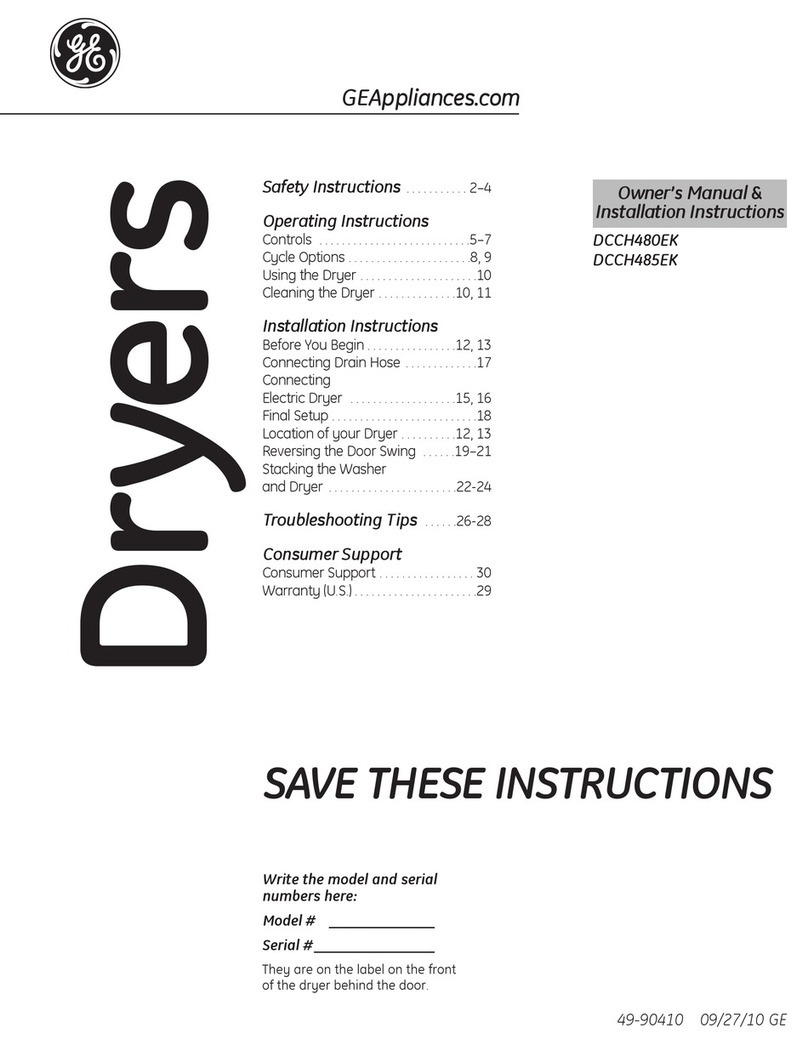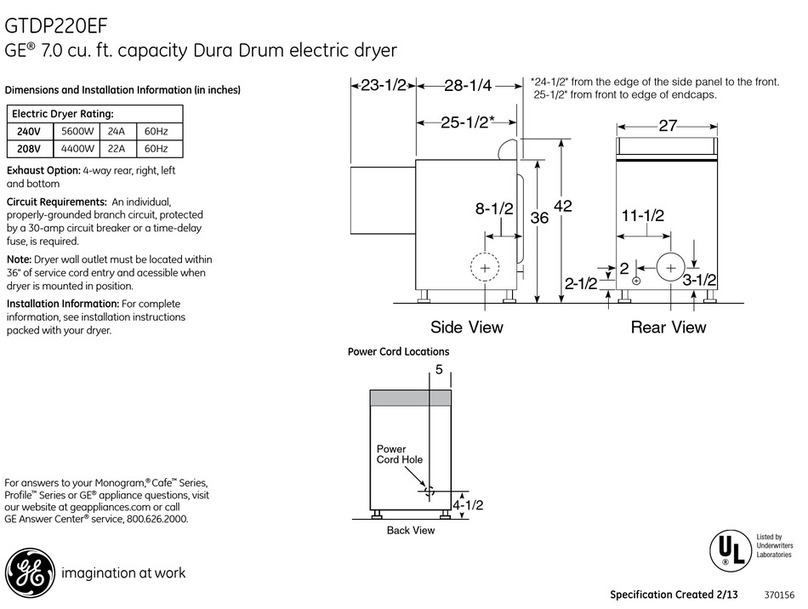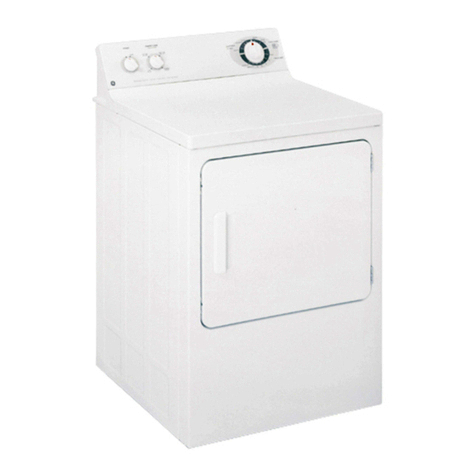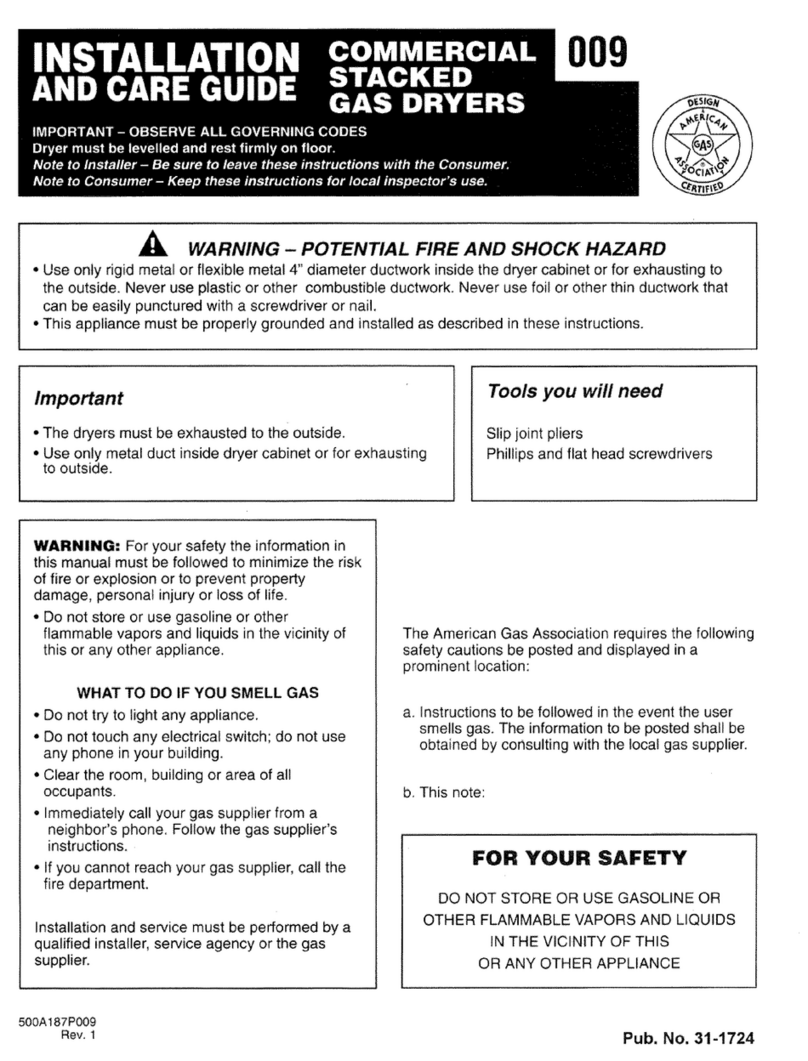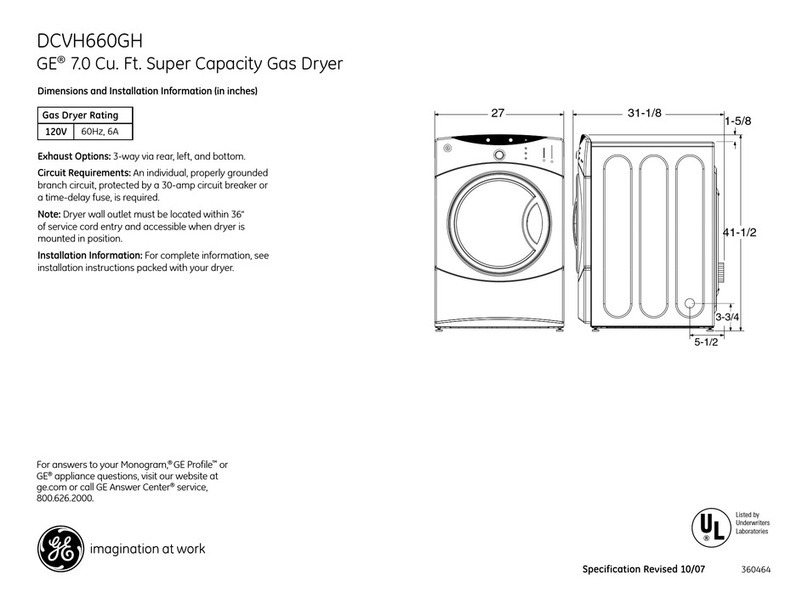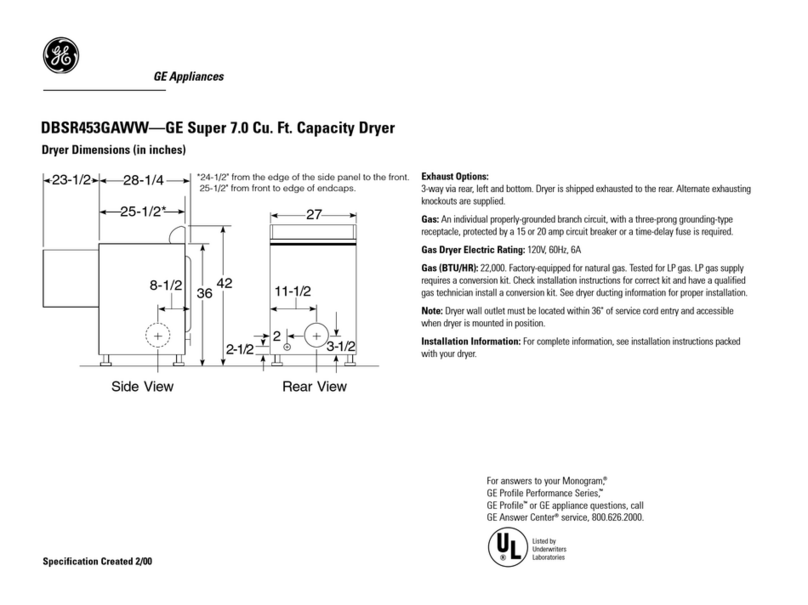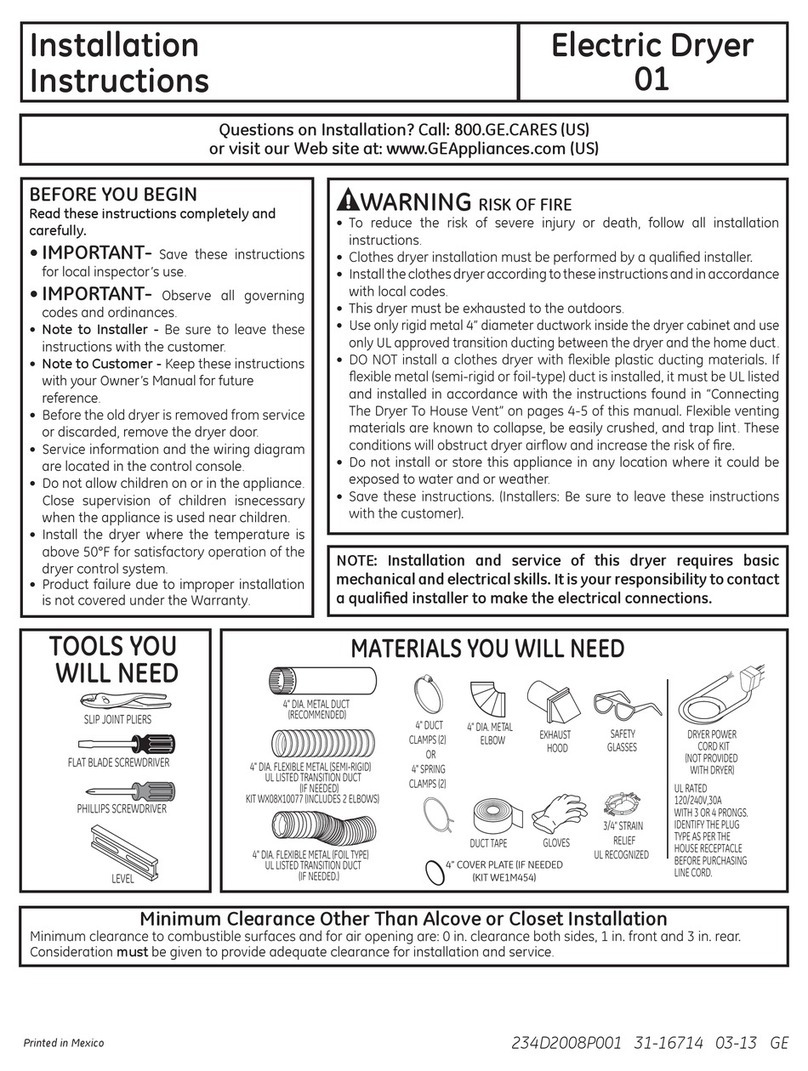—
—hate
where the
tem~erature
is above
50°F.
(lO°C.)
fo;
satisfactory operation of the dryer
control system. Do not install or
store the dryer where it
will
be
exposed to the weather.
–Connect to a properly rated,
protected and sized power-supply
circuit to avoid electrical overload.
—Exhausting to
the
outside is
STRONGLY RECOMMENDED
to prevent large amounts of
moisture and lint from being blown
into the room. Carefully follow the
Exhausting
Detis
in the hstilation
Instructions.
. When disconnecting this
appliance pull by the plug rather
than the cord to avoid damage to the
cord or junction of cord and plug.
Make sure that the cord is located so
that it will not be stepped on,
tripped over or otherwise subjected
—
to damage or stress.
●
Do not repair or replace any
part of the appliance or attempt
any servicing unless specifically
recommended in this Use and
Care Book or in published
user-
repair instructions that you
understand and have the skills to
carry out.
To minimize the possibility
of a fire hazard.
●
Do not use heat to dry articles
containing rubber, plastic, or
similar materials (such as padded
bras, tennis shoes, galoshes, bath
mab,
rugs, bibs, baby pants, plastic
bags, etc.) as these
materi~
may
melt or burn. Also, some rubber
materi~,
when
hated,
can under
certain circumstances produce
fire by spontaneous combustion.
●
Garments labeled “Dry Away
From Heat” (such as life jackets
containing Kapok) must not be put
. .
in your dryer.
. Do not wash or dry articles
that have been
cl~ned
in, washed
in, soaked in, or spotted with
combustibleorexplosive
substance
(such as wax, paint, gasoline,
degreasers,
drywleaning
solvenb,
kerosene, etc.) which may ignite
or explode. Do not use or store
such substances on/or around
your washer and/or dryer during
operation.
●
Any article on which you have
used a cleaning solvent, or which
contains flammable materials
(such as cleaning cloths, mops,
towels used in beauty salons,
restaurants or barbershops, etc.)
must not be placed in or near the
dryer until
dl
traces of these
flammable liquids or solids and
their fumes have been removed.
There are many highly flammable
items used in homes such as:
acetone, denatured alcohol,
gasoline, kerosene, some household
cleaners, some spot removers,
turpentines, waxes, wax removers
and products containing petroleum
distillates,
●
Clean the lint filter before each
load to prevent lint accumulation
inside the dryer or in the room.
DO
N~
OPERATE THE
DRYER WITHOUT THE LINT
FILTER IN PLACE.
●
Keep area around and
underneath your appliance free
from the accumulation of
combustible materials, such as
lint, paper, rags, chemicals, etc.
.
DO
not
store items that may
burn
or melt
(such as clothing, paper
material, plastics or plastic
containers, etc.) on top of tie dryer
during operation.
●
The interior of the machine
and the exhaust duct connection
inside the dryer
should
be cleaned
periodically by a qualified
individual.
●
Exhaust duct (see installation
instructions). Use only metal duct
inside dryer or for exhausting
dryer to the
ouhide.
3
To minimize the possibility
of
i~ury.
●
Never reach into the dryer while
the drum is moving. Before loading,
unloading or adding clothes, wait
until the drum has completely
stopped.
●
Close supervision is necessary
if this
app~ance
is used by or nwr
children. Do not allow children to
play inside, on or with this
appliance or any discarded
appliance. Dispose of discarded
appti~cw and shipping or packing
—
materiaIs
properly. Before
discarding a dryer, or removing
from service, remove the door of
the drying compartment.
●
Keep all laundry aids (such
as detergents, bleaches, fabric
softeners, etc.) out of the reach of
children, preferably in a locked
cabinet. Observe all warnings on
container labels to avoid personal
injury.
●
Keep the floor around your
appliances clean and dry to reduce
the possibility of slipping.
●
Do not dry fiberglass articles in
your dryer. Skin irritation could
result from the remaining glass
particles that may be picked up
by clothing during subsequent
dryer uses.
●
The laundry process can reduce
the flame
retardancy
of fabrics, To
avoid such a result, the garment
manufacturer’s care instructions
should be followed very carefully.
●
Never climb on or stand on the
dryer top or door.
Q
Do not tamper with controls.
●
To minimize the possibility
of electric shock, unplug this
appliance from the power supply
before attempting any maintenance
or cleaning (except the removal and
cleaning
of the lint filter).
N~E:
Turnin~the
Cycle Selector knob
to an OFF position does
NW
disconnect the appliance from






